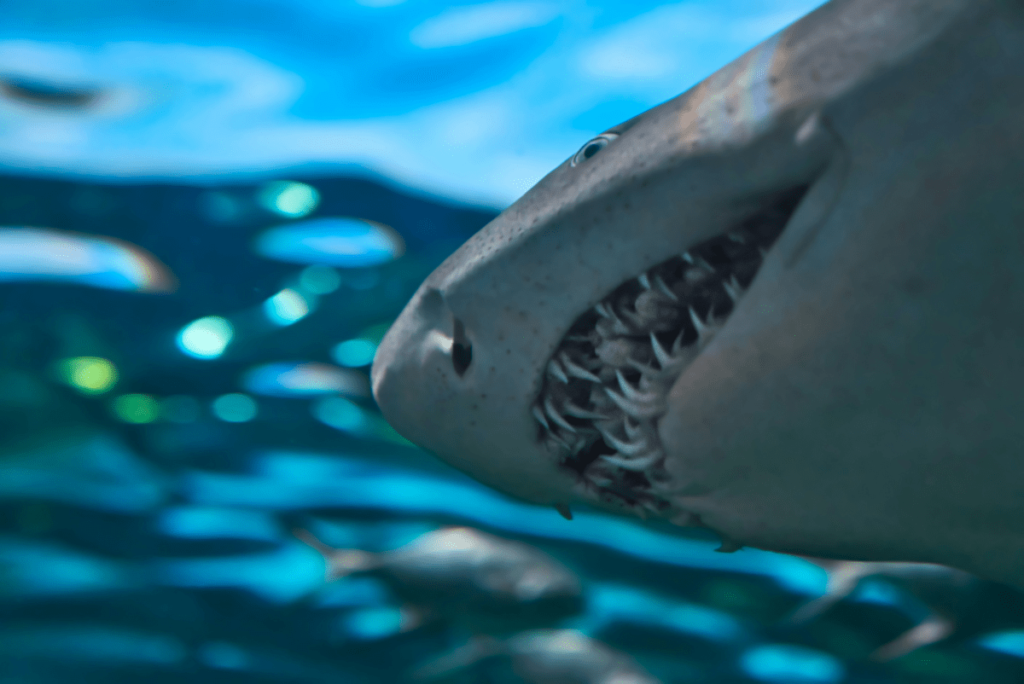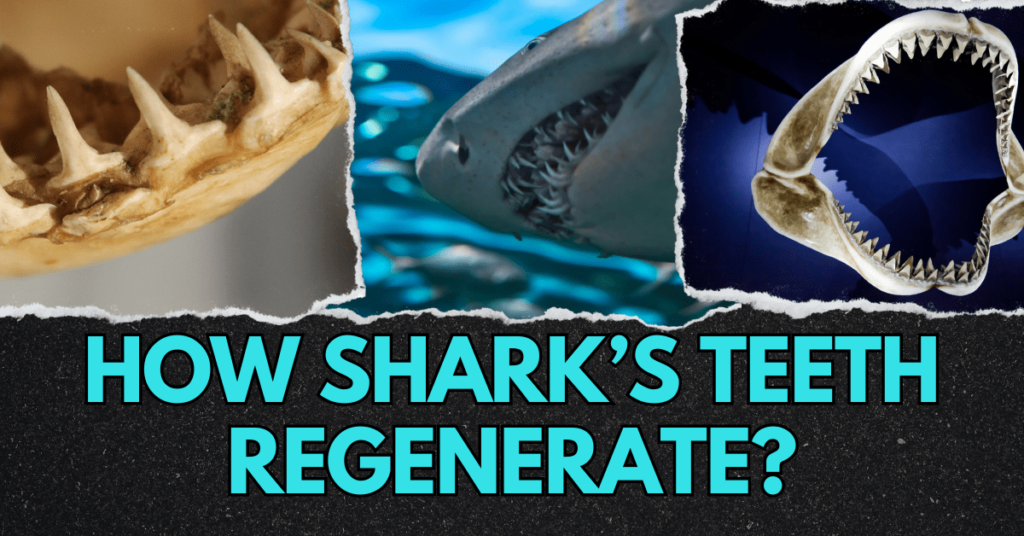Shark teeth, How many teeth do sharks have, Types of shark teeth, Great white shark tooth, How many rows of teeth do sharks have, Different types of sharks teeth, Will shark teeth move forward, Great white shark teeth, Are sharks teeth bones, How many teeth does a shark have, How much teeth does a shark have, How many rows of teeth do a shark have, How many teeth does a great white shark have
Sharks have long captured the imagination of people around the world, not only for their predatory prowess but also for their unique dental characteristics. One of the most fascinating aspects of sharks is their ability to grow and regenerate teeth multiple times throughout their lives.
Unlike humans, who are limited to just two sets of teeth, sharks possess a seemingly endless supply, replacing worn or lost teeth effortlessly. This article will explore the anatomy of shark teeth, the regeneration process, and how these features contribute to sharks’ status as top predators in the ocean.
Understanding how sharks grow and replace their teeth is essential not only for marine biology but also for conservation efforts. With declining shark populations, the survival of these extraordinary creatures—and by extension, the health of our oceans—depends on our knowledge of their biology and behavior.
You might also be interested in discovering Do Sharks Die if they Stop Swimming?

Animal Information Table:
| Common Name | Shark (Great White Shark) |
| Scientific Name | Carcharodon carcharias |
| Family Name | Lamnidae |
| Type | Fish |
| Size (Head and body length, Tail length) | Up to 6.4 m (21 ft); tail length varies |
| Weight | 680 to 1,100 kg (1,500 to 2,400 lbs) |
| Size Relative to a 6-Ft Human | About 3 to 4 times the length of a 6-ft human |
| Diet | Carnivorous (primarily seals, fish, and marine mammals) |
| Average Lifespan in the Wild | 70 years or more |
| Habitat | Coastal and open ocean waters |
| Group Name | School (young sharks); solitary (adults) |
| Found In | Coastal waters of all major oceans |
| Conservation Status | Vulnerable (varies by region; some populations are critically endangered) |
Secrets of Shark Teeth
The Anatomy of Shark Teeth
Shark teeth are specialized structures perfectly designed for hunting and feeding. Unlike human teeth, which are rooted firmly into our jaws, shark teeth are loosely embedded in the gums. This allows sharks to shed and replace their teeth with ease. Shark teeth also differ in shape and function based on the species, diet, and ecological niche of the shark.
How many teeth does a Great White Shark have at one time?
Up to 300 teeth are present in a Great White Shark’s mouth at once, with multiple rows lined up behind to replace any lost teeth.
How many rows of teeth do most sharks have?
Most sharks have between 3 to 5 rows of teeth, allowing for continuous replacement throughout their lives.
There are three main types of shark teeth: pointed teeth for gripping slippery prey, flat teeth for crushing shellfish, and serrated teeth for cutting through flesh. For example, Great White Shark teeth are triangular and serrated, making them ideal for tearing apart large prey like seals. Other species, such as the Tiger Shark, have flatter teeth designed to crush the shells of sea turtles. These dental adaptations highlight the diverse feeding strategies sharks have developed over millions of years.
Shark are in the List of Top 10 Animals with the Strongest Bite
The variety in shark teeth also reflects their role as apex predators in the ocean. With different types of sharks teeth, each species is perfectly equipped to hunt specific prey, ensuring their survival in the complex marine food web.

How Sharks Regenerate Their Teeth
One of the most remarkable traits of sharks is their ability to regenerate teeth continuously. Unlike humans, who are limited to a single replacement set of teeth in their lifetime, sharks can grow and shed teeth throughout their entire lives. In fact, some species can go through thousands of teeth over the course of their lifespan.
Sharks generally have multiple rows of teeth, with new teeth constantly forming behind the front row. As teeth in the front row are lost or damaged, new teeth from the back rows rotate forward to take their place. This process is often referred to as a “conveyor belt” system. How many rows of teeth do sharks have? It varies by species, but some sharks, like the Great White, have up to five rows of teeth at any given time.
The number of teeth a shark regenerates can be astonishing. Over the course of a lifetime, some sharks may lose and replace up to 30,000 teeth. Will shark teeth move forward? Yes, the newly formed teeth gradually push forward to replace those that are lost, ensuring that sharks always have a fresh set of razor-sharp tools ready for hunting.
| Type of Shark | Tooth Shape | Number of Teeth | Tooth Replacement Rate | Notable Feature |
|---|---|---|---|---|
| Great White Shark | Triangular, serrated edges | Up to 300 teeth | Every 1 to 2 weeks | Can lose up to 30,000 teeth in a lifetime |
| Tiger Shark | Jagged, pointed teeth | Approximately 48 to 50 | Every 1 to 2 months | Specialized teeth for crushing prey like turtles |
| Hammerhead Shark | Narrow, straight teeth | 32 to 40 teeth | Every 2 to 3 weeks | Unique head shape aids in hunting |
| Bull Shark | Wide, flat teeth | 50 to 52 teeth | Every 1 to 2 weeks | Adapted for eating a wide variety of prey |
Benefits of Continuous Tooth Regeneration
The ability to constantly regenerate teeth provides sharks with a significant advantage in the wild. Their predatory efficiency and survival depend heavily on this trait. Sharks use their teeth to capture, hold, and tear apart prey. The continuous replacement of teeth ensures that sharks are always prepared for the next hunt, no matter how many teeth they lose in the process.
Another benefit is that tooth regeneration allows sharks to adapt to various types of prey. For instance, a shark that frequently hunts large marine mammals may wear down its teeth faster than one that feeds on smaller fish or shellfish. The constant supply of new teeth ensures that even if their diet changes, their ability to hunt remains unaffected.
Tooth regeneration also plays a role in the overall health and longevity of sharks. By shedding old or damaged teeth, sharks reduce the risk of infection and maintain optimal dental health, which is critical for their survival as apex predators in the ocean.

Can a shark regrow its teeth if lost?
Yes, sharks can regrow lost teeth, with some species replacing teeth as often as every 1-2 weeks.
How many teeth can a shark regenerate in its lifetime?
Some sharks can regenerate up to 30,000 teeth over the course of their lifetime.
Shark Species and Their Unique Teeth
Different shark species have evolved distinct types of teeth suited to their dietary habits. For example, the Great White Shark teeth are perfectly designed for tearing flesh, making them one of the most feared predators in the ocean. Their large, serrated teeth can easily puncture the thick hides of seals and other marine mammals.
The Tiger Shark, on the other hand, has uniquely shaped teeth that are ideal for crushing the hard shells of sea turtles and crustaceans. These types of shark teeth demonstrate the specialized adaptations different species have developed to thrive in their respective environments.
There are even sharks with specialized dental adaptations, such as the Cookiecutter Shark, which uses its unique teeth to gouge out chunks of flesh from larger animals. This diversity in tooth structure and function is a testament to the evolutionary success of sharks over hundreds of millions of years.

Do all sharks have the same type of teeth?
No, different species of sharks have evolved different types of teeth based on their diet and feeding strategies.
The Role of Shark Teeth in Ecosystem Balance
Sharks play a critical role in maintaining the balance of marine ecosystems. As apex predators, they help regulate the populations of various species, ensuring that the ecosystem remains healthy and functional. Shark teeth are central to their ability to hunt and capture prey, making tooth regeneration a key factor in their survival.
Without the continuous supply of sharp teeth, sharks would be less efficient hunters, which could disrupt the balance of the marine food web. As populations of prey species grow unchecked, the ecosystem would suffer, potentially leading to the collapse of certain marine habitats.
However, with many shark species facing threats from overfishing, habitat destruction, and climate change, the loss of these apex predators could have devastating effects on ocean health. Understanding how many teeth do sharks have and the role these teeth play in their survival can help drive efforts to conserve these incredible creatures.

FAQs:
How many teeth does a shark have?
Most sharks can have anywhere from 30 to 50 rows of teeth at one time, and over their lifetime, they can regenerate thousands of teeth.
How many rows of teeth do sharks have?
Sharks generally have between 3 to 5 rows of teeth, depending on the species.
Will shark teeth move forward?
Yes, as sharks lose teeth from the front row, new teeth from the back rows move forward to replace them.
Are sharks teeth bones?
No, shark teeth are not bones. They are made of dentin, a hard tissue that is also found in human teeth, but their composition differs from bone.

Conclusion
Sharks’ ability to grow and replace teeth continuously throughout their lives is one of the most fascinating aspects of their biology. This remarkable adaptation not only allows sharks to hunt efficiently but also contributes to their role as apex predators, maintaining the delicate balance of marine ecosystems.
As we continue to learn more about sharks and their unique adaptations, it becomes clear that protecting these animals is crucial for the health of our oceans. By supporting shark conservation efforts and raising awareness of their vital role in the ecosystem, we can help ensure that future generations will continue to marvel at these incredible creatures.




